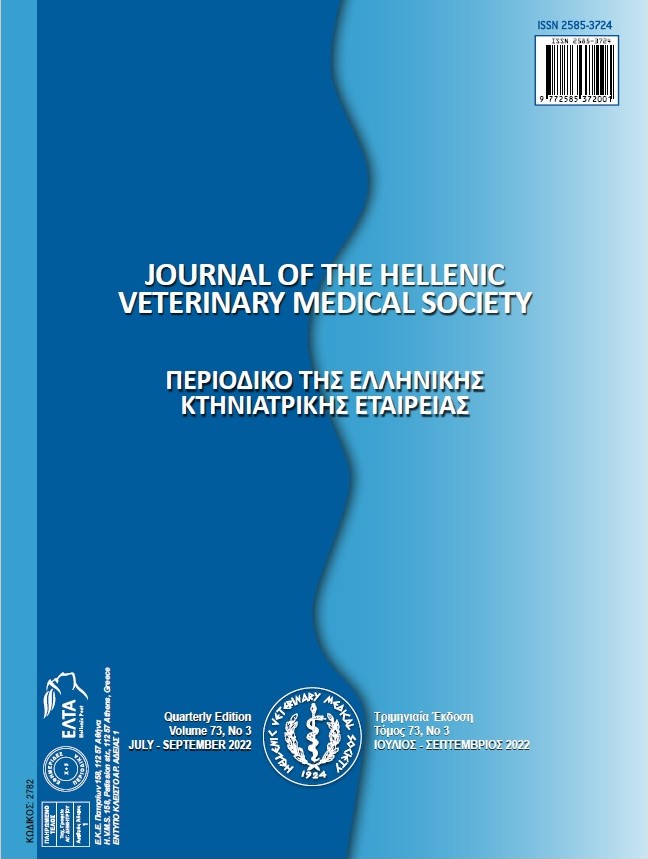Detection of Schmallenberg virus antibody in equine population of Kurdistan province, west of Iran

Περίληψη
Schmallenberg virus (SBV) is a newly emerging virus in Simbu group. It is an arbovirus (virus transmitted by arthropods) that causes various complications in the fetus after infecting pregnant animals. The clinical signs of infection to this virus are fever, loss of appetite, reduced milk yield and in some cases, diarrhea and in pregnant animals, congenital malformations in calves, lambs, and kid goats. The aim of current study was to detect of Schmallenberg virus antibody in equine population of Kurdistan province, west of Iran. In this cross sectional study, blood samples from 184 horse in different rural areas of Kurdistan province (located in west of Iran) were analyzed using an indirect ELISA test. Risk factors of each sample such as sex, age, breed, history of abortion and the geographic location were taken into consideration. From a total of 184 serum samples that analyzed for the presence of antibody against SBV, 14.68% (n=27) of total samples was positive for SBV antibody, and 2.17% (n=4) was doubtful, and 83.15% (n=153) was negative. Except for the geographical area, there was no statistically significant difference between risk factors (p>0.05). The positive results of the samples tested in this study may show the high population and activity of Culicoides biting midges, their proper living conditions and illegal entry of infected livestock from other regions, especially from neighboring countries.
Λεπτομέρειες άρθρου
- Πώς να δημιουργήσετε Αναφορές
-
Mahdavi, S., Salehzadeh, M., & Montazeri, M. (2023). Detection of Schmallenberg virus antibody in equine population of Kurdistan province, west of Iran. Περιοδικό της Ελληνικής Κτηνιατρικής Εταιρείας, 74(2), 5633–5636. https://doi.org/10.12681/jhvms.29598 (Original work published 4 Ιούλιος 2023)
- Τεύχος
- Τόμ. 74 Αρ. 2 (2023)
- Ενότητα
- Research Articles

Αυτή η εργασία είναι αδειοδοτημένη υπό το CC Αναφορά Δημιουργού – Μη Εμπορική Χρήση 4.0.
Οι συγγραφείς των άρθρων που δημοσιεύονται στο περιοδικό διατηρούν τα δικαιώματα πνευματικής ιδιοκτησίας επί των άρθρων τους, δίνοντας στο περιοδικό το δικαίωμα της πρώτης δημοσίευσης.
Άρθρα που δημοσιεύονται στο περιοδικό διατίθενται με άδεια Creative Commons 4.0 Non Commercial και σύμφωνα με την άδεια μπορούν να χρησιμοποιούνται ελεύθερα, με αναφορά στο/στη συγγραφέα και στην πρώτη δημοσίευση για μη κερδοσκοπικούς σκοπούς.
Οι συγγραφείς μπορούν να καταθέσουν το άρθρο σε ιδρυματικό ή άλλο αποθετήριο ή/και να το δημοσιεύσουν σε άλλη έκδοση, με υποχρεωτική την αναφορά πρώτης δημοσίευσης στο J Hellenic Vet Med Soc
Οι συγγραφείς ενθαρρύνονται να καταθέσουν σε αποθετήριο ή να δημοσιεύσουν την εργασία τους στο διαδίκτυο πριν ή κατά τη διαδικασία υποβολής και αξιολόγησής της.




